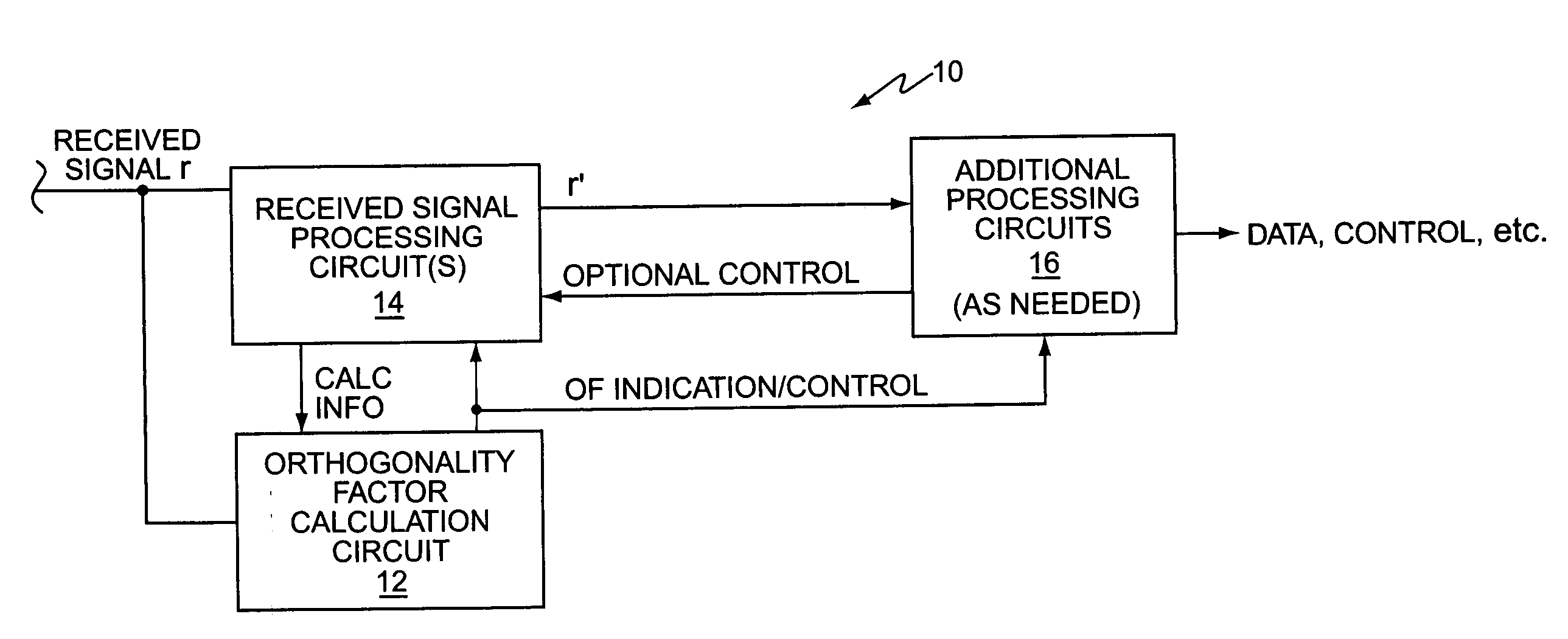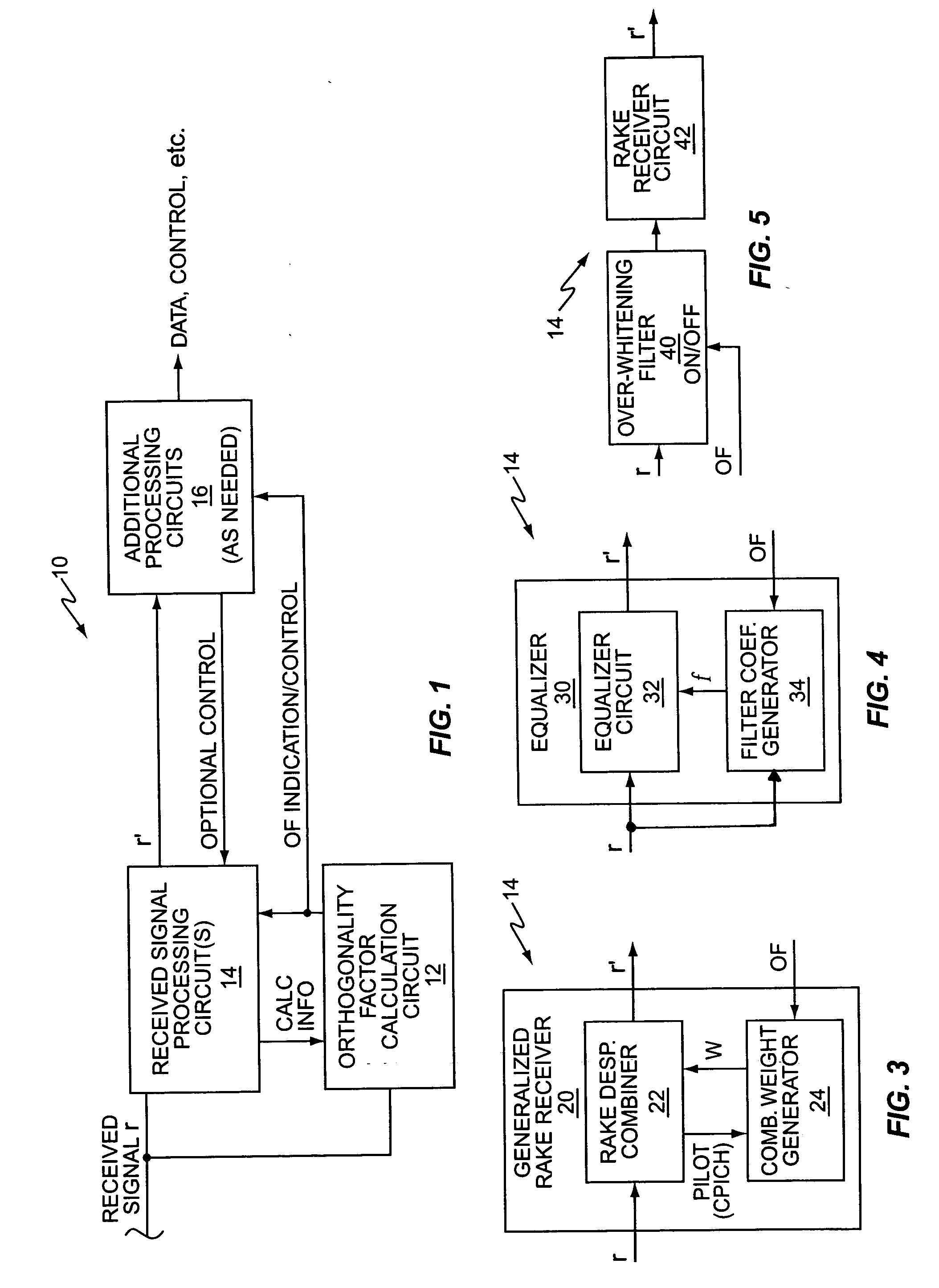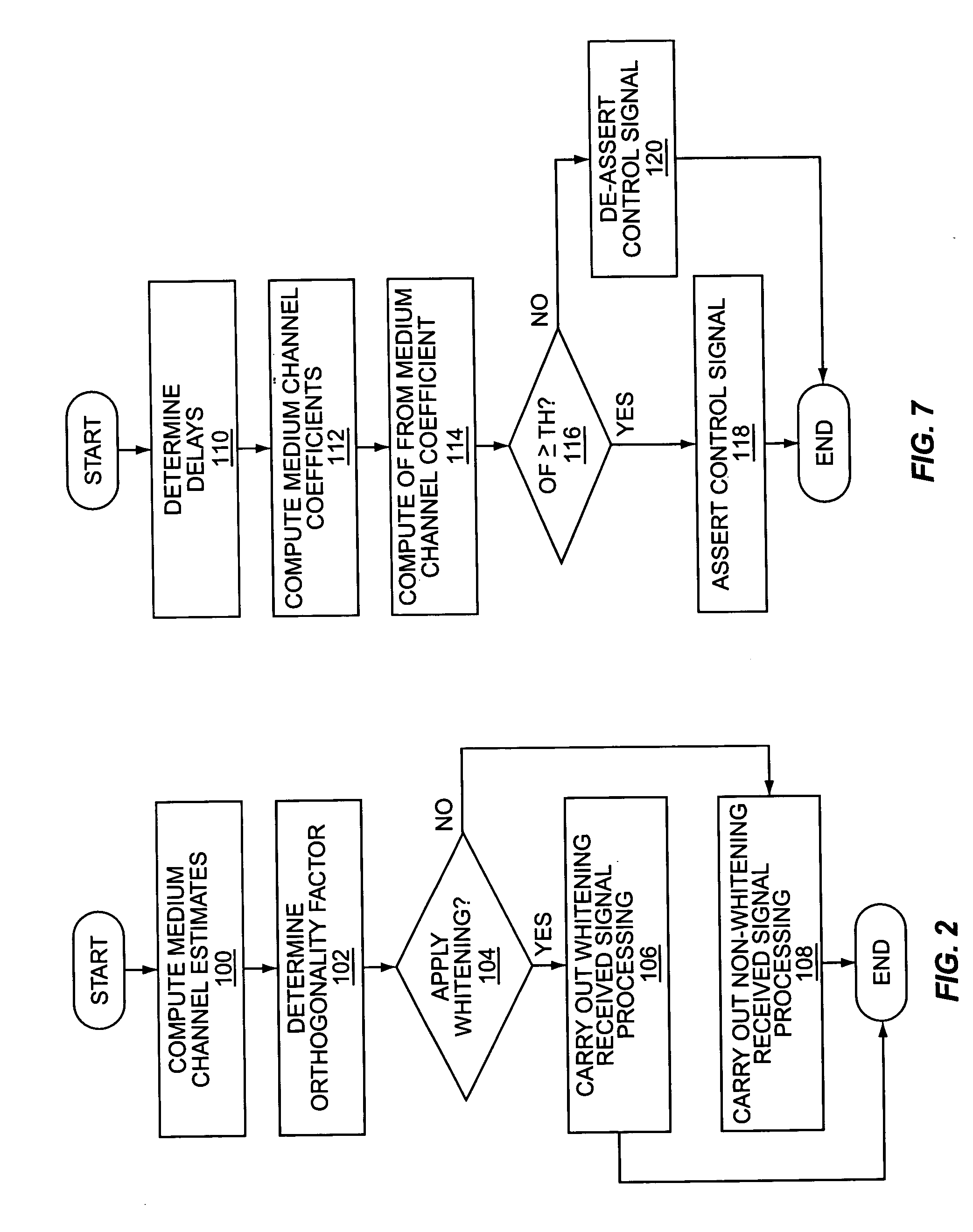Method and apparatus for controlling interference suppressing receivers
a receiver and interference suppression technology, applied in the field of wireless communication systems, can solve the problems of interference suppression processing that cannot the interference suppression processing may not improve the receiver's performance, so as to improve the reception performance, control the interference suppression, and save power
- Summary
- Abstract
- Description
- Claims
- Application Information
AI Technical Summary
Benefits of technology
Problems solved by technology
Method used
Image
Examples
Embodiment Construction
[0021] Linear interference suppression in wireless communication systems can be viewed as the classic “matched filter in colored noise” problem. The optimal (SINR) solution to this problem is given by H(ω)=P*(ω)G*(ω)IorP*(ω)G*(ω)2+Φ(ω),(1)
where P(ω) represents the frequency response of the transmit pulse shaping filter, G(ω) represents the frequency response of the medium propagation channel, Ior represents total base station transmit power, and Φ(ω) represents the power spectral density (PSD) of inter-cell interference plus noise. Typically there is a corresponding receive pulse shape filter implemented separately in analog hardware, so that portion of the optimal solution is assumed to be present.
[0022] A conceptual view of Equation (1) is that of whitening the colored noise and then matching to the composite channel. In this view Equation (1) can be split, at least conceptually for illustration, into separate whitening and matching filters as shown below H(ω)=W(ω...
PUM
 Login to View More
Login to View More Abstract
Description
Claims
Application Information
 Login to View More
Login to View More - R&D
- Intellectual Property
- Life Sciences
- Materials
- Tech Scout
- Unparalleled Data Quality
- Higher Quality Content
- 60% Fewer Hallucinations
Browse by: Latest US Patents, China's latest patents, Technical Efficacy Thesaurus, Application Domain, Technology Topic, Popular Technical Reports.
© 2025 PatSnap. All rights reserved.Legal|Privacy policy|Modern Slavery Act Transparency Statement|Sitemap|About US| Contact US: help@patsnap.com



